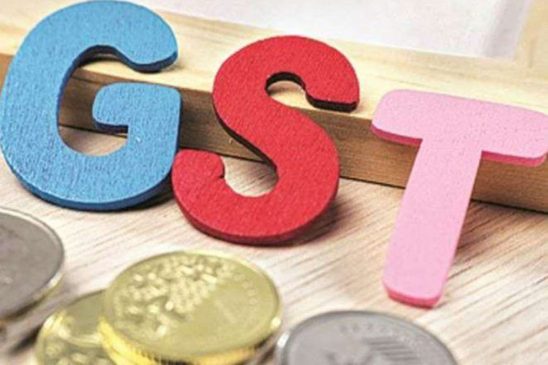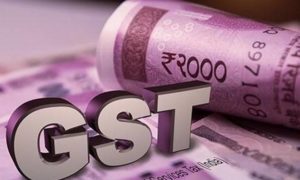Gross goods and services tax (GST) collections, including the proceeds of the compensation cess, came in at Rs 1.61 trillion in March (February transactions), the second-highest monthly mop-up ever, taking the government’s total receipts from the indirect tax to Rs 18.1 trillion for the fiscal year 2022-23.
Read More:- India Has Robust System, Giving Confidence To Overseas Investors: FM Nirmala Sitharaman
Gross goods and services tax (GST) collections, including the proceeds of the compensation cess, came in at Rs 1.61 trillion in March (February transactions), the second-highest monthly mop-up ever, taking the government’s total receipts from the indirect tax to Rs 18.1 trillion for the fiscal year 2022-23. The Centre is learnt to have garnered GST revenue, including cess of Rs 8.42 trillion, in the fiscal year, as against the revised estimate of Rs 8.54 trillion (Central GST of Rs 7.24 trillion and cess of Rs 1.3 trillion).
A recovery in economic activities, high inflation and rush among businesses to clear dues before the close of the financial year have helped boost the collections. The gross revenue in 2022-23 was 22% higher than that last year, the finance ministry said on Friday, adding that the average gross monthly collection for the full year was Rs 1.51 trillion as against Rs 1.23 trillion in FY22.
Read More:- New financial year: 17 new rules investors need to know from today
Gross goods and services tax (GST) collections, including the proceeds of the compensation cess, came in at Rs 1.61 trillion in March (February transactions), the second-highest monthly mop-up ever, taking the government’s total receipts from the indirect tax to Rs 18.1 trillion for the fiscal year 2022-23. The Centre is learnt to have garnered GST revenue, including cess of Rs 8.42 trillion, in the fiscal year, as against the revised estimate of Rs 8.54 trillion (Central GST of Rs 7.24 trillion and cess of Rs 1.3 trillion).
A recovery in economic activities, high inflation and rush among businesses to clear dues before the close of the financial year have helped boost the collections. The gross revenue in 2022-23 was 22% higher than that last year, the finance ministry said on Friday, adding that the average gross monthly collection for the full year was Rs 1.51 trillion as against Rs 1.23 trillion in FY22.
Read More: Bilkis Bano Gangrape Case: SC To Hear Pleas Against Premature Release Of 11 Convicts Today
GST collection in March 2023 was 13% higher than Rs 1.42 trillion in March 2022. On a sequential basis, the mop-up was a little over 7% higher than Rs 1.5 trillion collected in February 2023.
“It is for the fourth time in the current financial year that the gross GST collection has crossed Rs 1.5 trillion,” it further said. Prior to this, the highest ever GST collection was in April 2022 at Rs 1.67 trillion. March also witnessed the highest ever collection of integrated GST (IGST) which is applied on imports and inter-state transactions, as well as the highest number of return filing, indicating further improvement in compliance.
Also Read- Rising Covid cases may lead to surge in hospitalisation, ICU stays: Doctors
According to the data, of the gross GST revenue collected in March, central GST (CGST) was Rs 29,546 crore, state GST (SGST) was Rs 37,314 crore, IGST was Rs 82,907 crore (including Rs 42,503 crore collected on import of goods) and cess was Rs 10,355 crore (including Rs 960 crore collected on import of goods).
The government has settled Rs 33,408 crore to CGST and Rs 28,187 crore to SGST from IGST as regular settlement. The total revenue of the Centre and the states in March 2023 after IGST settlement was Rs 62,954 crore for CGST and Rs 65,501 crore for SGST.
“During the month, revenue from import of goods was 8% higher and the revenue from domestic transaction (including import of services) are 14% higher than the revenue from these sources during the same month last year,” the ministry said.
As much as 93.2% of statement of invoices (in GSTR-1) and 91.4% of returns (in GSTR-3B) of February were filed till March 2023 as compared to 83.1% and 84.7%, respectively, same month last year.
Also Read– Aadhaar-PAN Linking Last Date March 31: Know How to Link, Pay Penalty Fees Online
“Various government initiatives on the technology front to improve GST compliance appears to show the actual effect in the form of GST collection rising each month. While various parts of the world are hit by recession, India has managed to see growth as indicated by overall tax collection,” noted Saurabh Agarwal, tax partner, EY.
Despite the expectation of a slowdown in economic activities and easing of inflationary pressures, analysts believe that GST collection could see a further rise in coming months. Aditi Nayar, chief economist, head, research and outreach, Icra, said the absolute GST collections for April 2023 (March transactions) are likely to report a healthy sequential rise.
Mahesh Jaising, partner and leader, indirect tax, Deloitte India, noted that with the growth in economic activity and increased focus on GST analytics based audits, the trend should see upward trajectory in the coming months. “With the new foreign trade policy being rolled out from today, we have to wait and watch the impact on the import-export which is expected to have a role in GST collections too,” he added.
Read More: Vande Bharat: Indian Railways to launch Vande Bharat Express train connecting Telangana and Andhra Pradesh, check route
The Union Budget 2023-24 had raised the revised estimate for GST collections by 9.5% from the Budget estimate of Rs 7.8 trillion. For FY24, GST collections are pegged at Rs 9.57 trillion.
In March 2023, over two dozen states and Union territories registered double-digit growth in GST collections, including Goa (33.33%), Puducherry (24.78%), Uttarakhand (21.34%), Jharkhand (20.92%), Karnataka (18.4%), Delhi (17.72%) and Tamil Nadu (15.24%). Some like Gujarat (8.31%) and Himachal Pradesh (8.11%) saw slightly weaker growth in collections in the month.





































